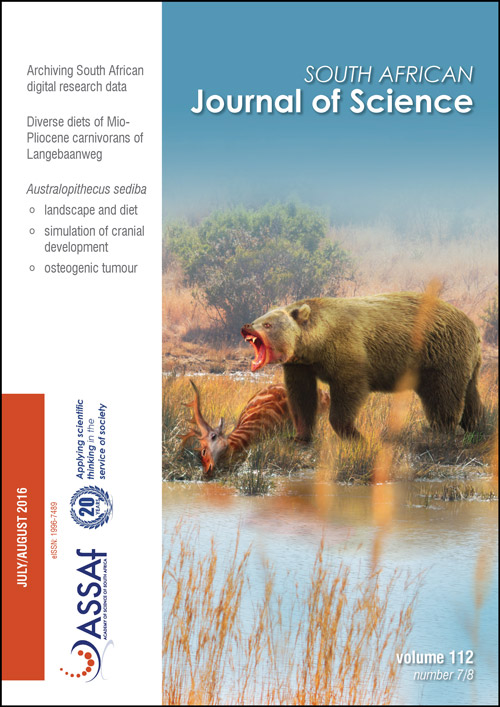Developmental simulation of the adult cranial morphology of Australopithecus sediba
DOI:
https://doi.org/10.17159/sajs.2016/20160012Keywords:
Malapa, geometric morphometrics, craniofacial morphology, hominin evolution, ontogenetic projectionAbstract
The type specimen of Australopithecus sediba (MH1) is a late juvenile, prompting some commentators to suggest that had it lived to adulthood its morphology would have changed sufficiently so as to render hypotheses regarding its phylogenetic relations suspect. Considering the potentially critical position of this species with regard to the origins of the genus Homo, a deeper understanding of this change is especially vital. As an empirical response to this critique, a developmental simulation of the MH1 cranium was carried out using geometric morphometric techniques to extrapolate adult morphology using extant male and female chimpanzees, gorillas and humans by modelling remaining development. Multivariate comparisons of the simulated adult A. sediba crania with other early hominin taxa indicate that subsequent cranial development primarily reflects development of secondary sexual characteristics and would not likely be substantial enough to alter suggested morphological affinities of A. sediba. This study also illustrates the importance of separating developmental vectors by sex when estimating ontogenetic change. Results of the ontogenetic projections concur with those from mandible morphology, and jointly affirm the taxonomic validity of A. sediba.
Published
Issue
Section
License

All articles are published under a Creative Commons Attribution 4.0 International Licence
Copyright is retained by the authors. Readers are welcome to reproduce, share and adapt the content without permission provided the source is attributed.
Disclaimer: The publisher and editors accept no responsibility for statements made by the authors
How to Cite
- Abstract 632
- PDF 503
- EPUB 213
- XML 247












.png)